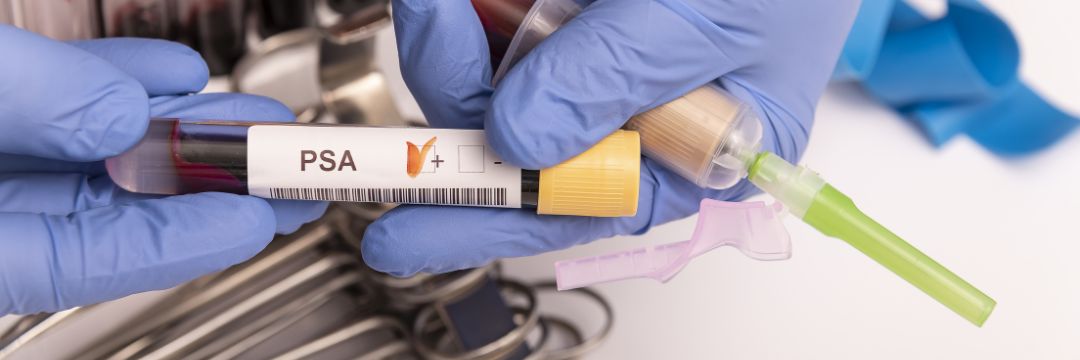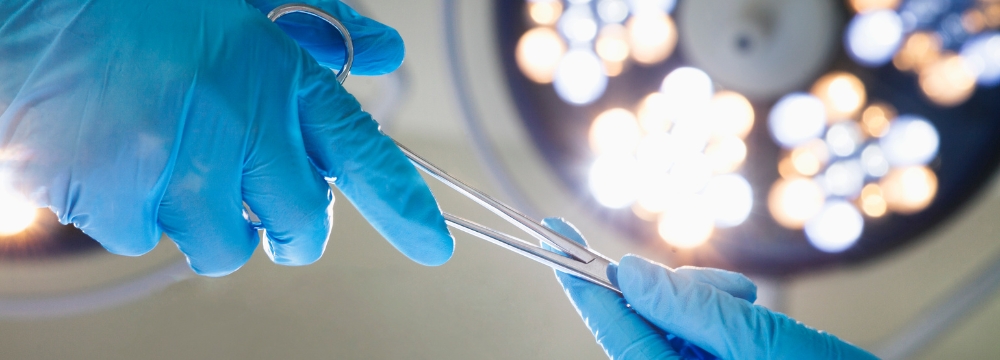
When Former President Joe Biden was found to have aggressive prostate cancer, headlines sparked questions across the country. Not long after, ESPN’s Jay Harris shared his own prostate cancer diagnosis, offering a raw, honest look at something many men avoid talking about.
Powerful celebrity stories about their healthcare beg the question: Are you getting screened?
Despite how common prostate cancer is – and how treatable it usually is when caught early – screening is still a bit of a gray area. Some men skip it entirely. Others aren’t even sure if they should be doing it. To complicate matters, the U.S. Preventive Services Task Force (USPSTF) doesn’t really offer a direct answer. Instead, the recommendation encourages men to discuss the risks and benefits with their doctors, making informed decisions based on their age, family history, and personal values.
Screening for prostate cancer is a team sport, and you’re the team captain – it’s up to you to start the conversation. So, let’s cut to the chase and get into the nitty gritty: What do you need to know? What are the tests? And why is early detection so important?
Don’t Wait For Symptoms
Nitty gritty point number one: You can feel perfectly fine and still have a serious medical condition. That’s the whole point of screenings – they’re meant to catch things before symptoms show up.
Prostate screenings primarily uncover early signs of prostate cancer, but they can also detect other prostate issues such as benign prostatic hyperplasia (BPH), which is a non-cancerous condition of prostate enlargement, and prostatitis, which is an inflammation or infection of the prostate.
But what about symptoms? If any of these conditions progress, here’s what you might notice:
| Condition | Possible Symptoms |
| Prostate Cancer | Later stage: Trouble urinating, blood in urine or semen, bone pain, erectile dysfunction |
| BPH | Weak stream, frequent urination (especially at night), incomplete bladder emptying |
| Prostatitis | Painful urination, pelvic discomfort, flu-like symptoms (if infected) |
Spoiler alert: Many men don’t experience any of these signs until the issue has been around for a while. The longer you let something go, the more difficult it becomes to address. Screening equals early detection, and early detection equals better outcomes.
According to the Centers for Disease Control and Prevention (CDC) and USPSTF, here’s a breakdown of when to consider screening:
- Ages 55 to 69: Screening with the PSA blood test (we’ll explain that in the next section) may benefit some men. The decision to do it should be made with your doctor, factoring in your personal and family health history.
- Age 70+: Oddly enough, routine screening is not recommended, but again, your overall health and risk factors still matter. Talk to your doctor to determine what’s right for you.
- High-risk groups, like African American men or those with a family history, should consider starting earlier, around age 40 to 45.
What You Can Do
Nitty gritty point number two: No one wants to go in for a digital rectal exam. We get it. But here’s the good news: the screening process is more straightforward – and more effective – than you might think.
Step 1: Know Your Risk
The likelihood of developing prostate cancer increases if:
- You’re 50+
- You’re African American
- You have a family history (father, brother, or grandfather with prostate cancer)
- Your diet is high in red meat, saturated fats, and sugar
- You live a mostly sedentary lifestyle
On the flip side, your risk may be reduced if you:
- Eat plenty of fruits and veggies (broccoli, cauliflower, and tomatoes are stars here)
- Get enough Vitamin D, selenium, and soy
- Maintain a healthy weight
Step 2: Get Screened
There are two main tools:
- The PSA Test – A blood test that checks your Prostate-Specific Antigen (PSA) levels. Higher levels may signal further investigation.
- The Digital Rectal Exam (DRE) – Yes, it’s awkward. But it allows your doctor to assess unusual bumps or changes in the prostate.
Many urologists suggest men consider a baseline PSA at age 40, even without symptoms or risk factors. Annual testing is often recommended starting at 50, or earlier if you’re high-risk.
It’s important to know that a high PSA doesn’t always mean cancer. Follow-up tests, like an MRI or biopsy, help confirm the diagnosis.
Step 3: Explore Your Options
If something is found, don’t panic. Many prostate cancers are slow-growing and manageable. Options include:
- Active surveillance – With the watch-and-wait approach, your doctor will simply monitor the cancer over time and make decisions with you based on progression.
- Surgery – A radical prostatectomy removes the prostate gland, often using the da Vinci robotic system for precision.
- Radiation therapy – This includes brachytherapy (placing tiny radioactive seeds directly inside or near the tumor) and IMRT (targeted external radiation).
- HIFU (High-Intensity Focused Ultrasound) – A minimally invasive treatment that uses sound waves to destroy cancer cells.
- Cryotherapy – As the name suggests, this treatment aims to freeze cancer cells.
- Hormone therapy – Sometimes hormones need to be balanced, so this blocks testosterone to slow cancer growth.
- Chemotherapy – This is typically the go-to if cancer is aggressive or has spread.
Which option is best? That depends on your cancer’s stage and Gleason score, as well as your age, overall health, and personal preference. A Gleason score is a grading system that evaluates cancer aggressiveness based on the appearance of cancer cells in tissue samples. Scores range from 6, which is considered low-grade cancer, to 10, high-grade cancer. Higher scores can indicate more aggressive cancer that is likely to grow and spread faster.
The Bigger Picture
Men’s health, in general, doesn’t get the same attention as other areas of wellness. But regular checkups and screening tests – whether for prostate cancer, cholesterol, blood pressure, or colon health – can change your entire trajectory.
As Jay Harris shared in his on-air reflection, getting checked is about facing reality, taking action, and engaging in the conversation to help others do the same. Early detection means less invasive treatment and better outcomes – most men die with prostate cancer, not from it. While headlines range from alarming to reassuring, screening can give you peace of mind and a sense of control over your health.
Where To Go From Here
Don’t put it off. Have the conversation. Know your numbers. Ask questions. And if you’re in the Carolinas, consider seeing Dr. Natale, where the focus is on personalized care, early detection, and providing you with the best options, should you ever need them.
Real strength isn’t in ignoring your health – it’s in taking care of it.









